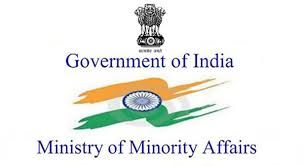
India is a country that has a rich diversity in the assembly of religions, cultures, racial stocks, and languages. The Scheduled Tribes (ST) are one of the main classes of the backward category or factually underprivileged lowest group of the society. That is why the Indian government has provided several schemes and policies for tribal people.
Despite several movements to encourage formal education to the tribe people, ever since independence, the learning rate among the Tribes has continued to below as well as the feminine literacy rate is still lower as compared to the nationwide female literacy rate.
What Are The Schemes And Policies For Tribal People In India?
Table of Contents

Education and other development of Tribe people are considered significant, not only due to the constitutional responsibility but also as a vital contribution to all-inclusive growth of tribal groups. In this article, we are going to highlight worthy schemes and policies for Tribal people in India for the elevation of education and other development among the Tribe community in our country.
Rajiv Gandhi National Fellowship for Scheduled Tribes Students

This scheme is a Central Government Scheme to offer fellowship to the Scheduled Tribe (ST) students for taking higher studies like Ph.D. and M.Phil. This scheme was presented in 2005-06.
Key Features Of The Scheme:
It provides Scheduled Tribe (ST) students higher studies like Ph.D. and M.Phil. in all the recognized Institutions/Universities by the University Grants Commission (UGC).
On the off chance that a number of up-and-comers surpass number of grants, UGC selects the up-and-comers dependent on the level of imprints got by the up-and-comers in Post-Graduation assessment.
The scheme is on the design of the University Grants Commission (UGC) fellowship given to steady full-time study students in Ph.D. and M.Phil. courses.
University Grants Commission (UGC) may distract openings from a specific State if a qualified candidate isn’t presented in that States.
The entire number of new fellowships each year is around 667.
The dispersion of partnerships among various States/UTs would principally be in the extent of the ST populace in the particular States/UTs.
The grant sum is dispensed to the competitors by the UGC through Bank Smart Cards.
The measure of Scholarship covers associations, possibility costs, costs for departmental help, accompanies/peruser help for handicap up-and-comers, and HRA on UGC design.
100% subsidy is given by the Ministry of Tribal Affairs in India on the base of the standards.
The average charge of fellowship is INR 2.16 lakh for any Junior Research Fellow (JRF) as well as INR 2.40 lakh for the Senior Research Fellow (SRF).
Post Matric Scholarship (PMS) For Scheduled Tribes Students

This scheme covers specialized, non-professional as well as mechanical and non-mechanical developments at several levels counting post courses covering the distance as well as continuing education. The Post Matric Scholarship (PMS) Scheme was presented during 1944-45 and thus it has been reviewed from time to time.
Key Features Of The Scheme:
The Scheme offers financial help to the Scheduled Tribe (ST) students reading at the post-secondary or post matriculation stage.
It is a Centrally Sponsored Scheme applied by the State Govt. and the Union Territory Managements.
The State Govt and Union Territory to which the candidate actually belongs honor the scholarship.
100% Central help in addition to the devoted obligation of the States Govts/ Union Territory’s Administration from the Govt of India.
This scheme as well covers central help to States/ Union Territory for setting up the Book Banks.
Allowances are accessible for educations in India only.
Vocational Training Centres in Tribal Areas

This scheme was presented in the year 1992-93. The foremost goal of this arrangement is to promote the services of the youth tribal people in numerous modern/traditional vocations reliant upon their informative condition, present financial trends as well as the market probability, which would empower them to increase suitable service or empower them to convert a self-employed person.
Key Features Of The Scheme:
The arrangement is being applied through the State Govts/Union Territory Administrations, Organizations or Institutions set up by Govt as independent bodies, informative and other institutes such as local bodies as well as supportive societies & Non-Governmental Administrations, etc.
Such a scheme and policy for tribal people are wholly for the advantage of the ST as well as the PTGs. One can take it up wherever in the nation but the importance will be specified to isolated tribal parts, occupied by mainly weak tribes as well as areas pretentious by radical actions.
The volume of each occupational training center is around 100 or more apprentices i.e. for a single skill there should be as a minimum of 20 applicants. As far as possible, least of 33% seats will be kept for the tribal girl applicants.
Separately each center may provide to 5 vocational developments in traditional or other services dependent upon the service possibility of the zone.
Each tribal girl/boy will get training in 1 trade of her/his preference, the progression being of a maximum of 6 months’ period.
Each apprentice is involved at the end of 6 months to a Principal Craftsman in any semi-urban part for a duration of 6 months to study his ability by practical involvement.
More Recommended Articles :-